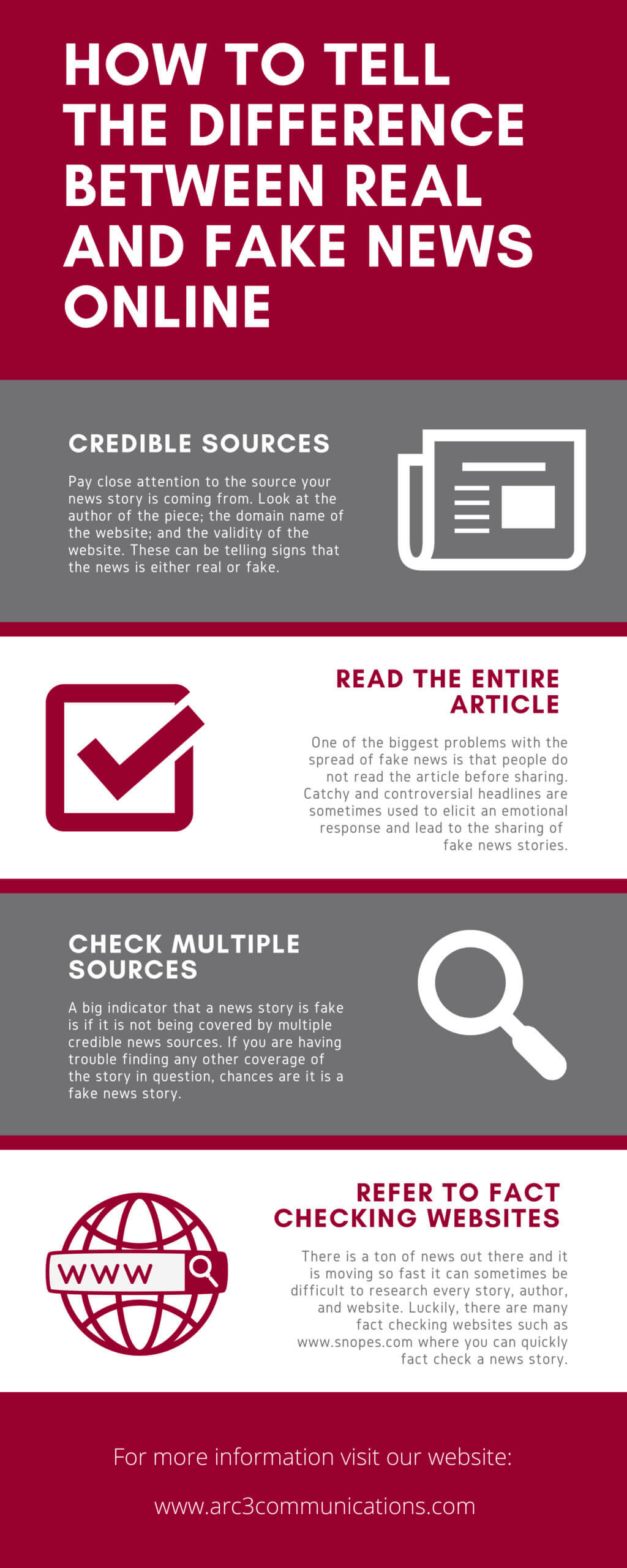In this day and age of unlimited information at our fingertips, readers need to take time and do a little research to verify the news they are reading and sharing with others is, in fact, real news from a credible source. Below are a few steps you can take to make sure the information you are receiving and sending is reliable and true.

